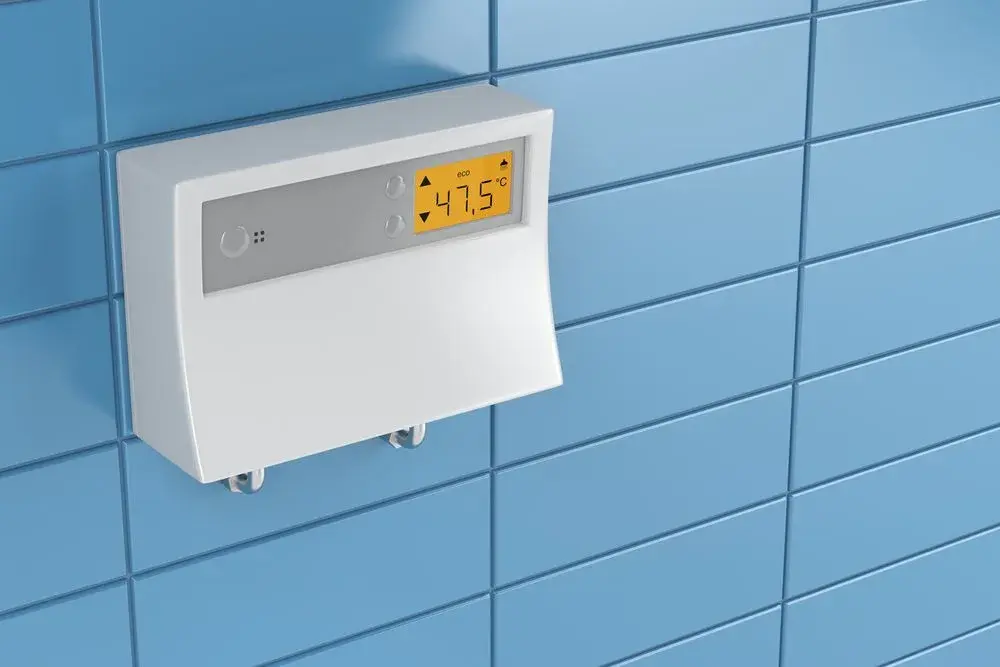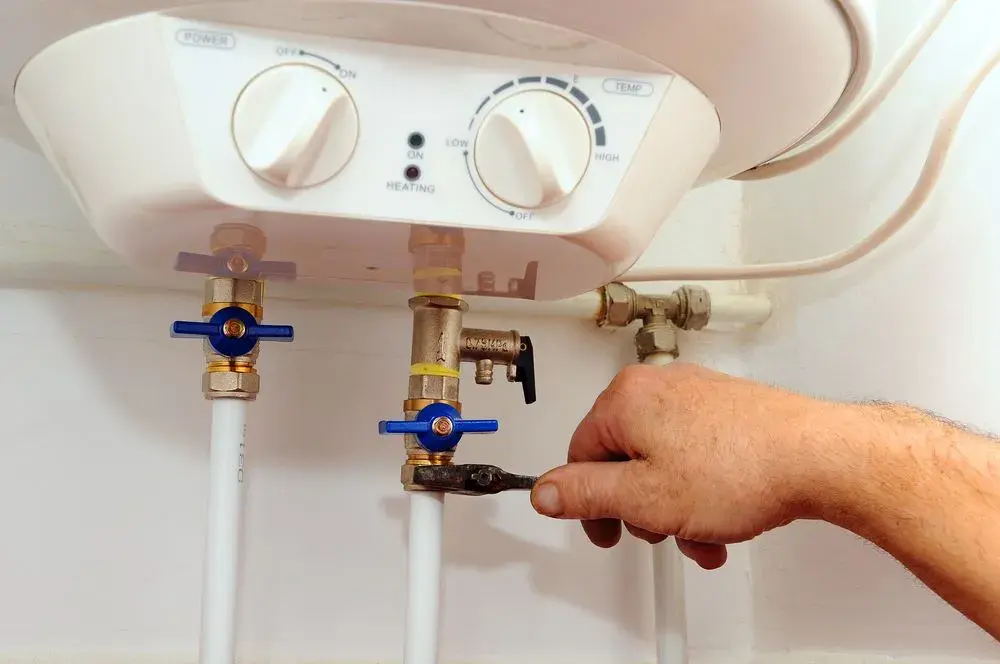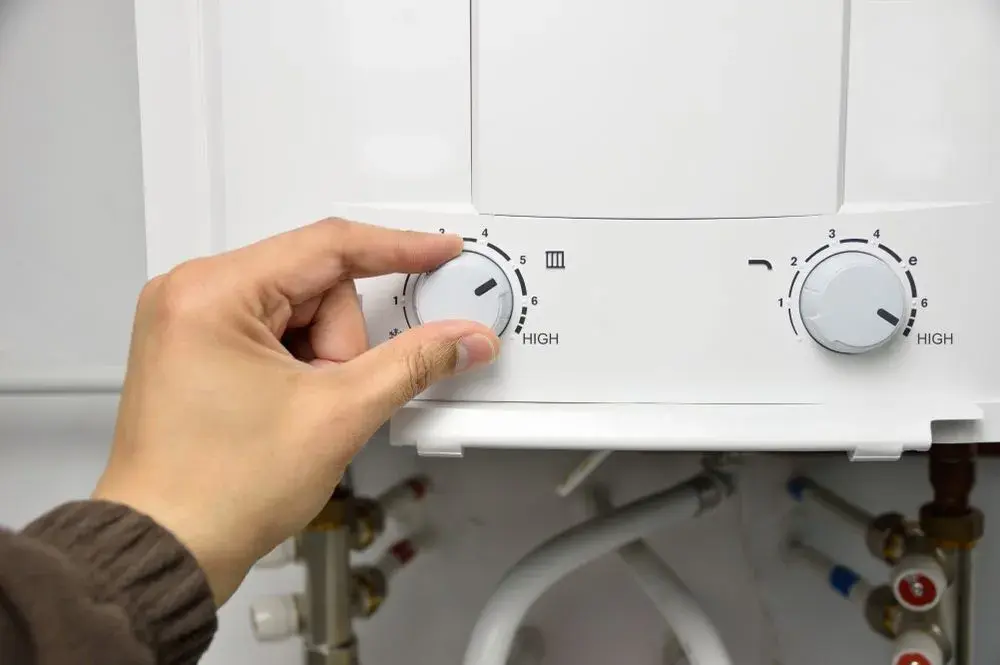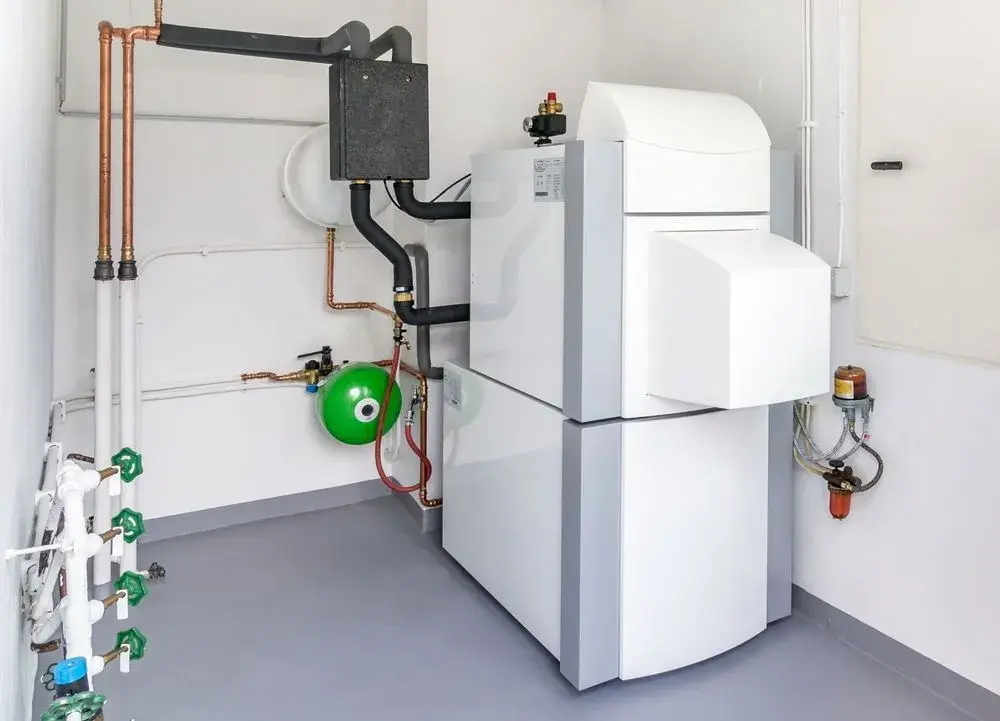The hot water heaters used in the hot water systems we design are efficient and may be used as space heaters to keep your home warm in winter.
We recommend which type of hot water heater design will suit your needs, work best in your environment, and save energy at home or at work.
Our professional MEP engineers can provide comparative cost estimates to help you decide which hot water heater design is best for you at the best price.

Water heaters are appliances or equipment that is designed to heat potable water and distribute it to the hot water system. Heated water expands and this can result in a potentially dangerous build-up of pressure in a tank-type water heater. Our engineers will recommend which type of hot water heater design will suit your needs, work best in your environment, and save energy at home or at work.
We are one of the fastest growing MEP design firms in the construction industry. We pride ourselves on having a fast turnaround while providing cost effective solutions. We are licensed in 50 states and are your one stop shop for all MEP design needs.
We are licensed in all 50 states!
We design to the perfection
Enjoy our lightening fast turnaround
We have completed so far!
Our designs are approved by DOB in one go
The best service experience in the market
Water heaters are appliances or equipment that is designed to heat potable water and distribute it to the hot water system. There are several different types, primarily those that have storage tanks and those that don’t.
Low-pressure boilers may be used for heating and for the supply of hot water. They operate at water temperatures and pressures that are slightly higher than water heaters – specifically, 250 °F vs 210 °F and 160 pounds per square inch (psi) vs 150 psi.
Tank-type water heaters, also known as storage water heaters, are generally fueled by electric or solar power, propane or natural gas, or oil. But whatever the fuel or energy used, they operate in a similar way, with similar components including valves and various pipes and fittings that deal with overflow and pressure relief. Also, the internal tank is commonly wrapped with some type of insulating material that ensures the water stays hotter for longer.
Tanks are available in different sizes. Cold water is piped into the bottom of the tank to ensure it is always full. Water expands when it is heated causing internal pressure. While there are safety devices and mechanisms that engineers use in hot water heater design to counter the risks of pressure damage to the plumbing system, manufacturers of storage tanks and water heaters stamp them on the outside of the tank to show what the maximum allowable working pressure is. The stamp is in the form of an indelible mark in a position that will be accessible for inspection.
It stands to reason that tank-type water heaters and storage tanks must be located (and connected) so that they are accessible and there is sufficient space for maintenance, servicing, and replacement if required.

More energy-efficient than tank-type water heaters, tankless water heaters, which provide water on demand, may operate with natural gas or propane, or with electricity, with gas-fired models producing higher flow rates. Because they don’t result in the standby energy losses associated with storage water heaters, they save money. Instead, cold water is piped into the unit and an electric element or gas burner heats the water.
Homes that use no more than 41 gallons of hot water every day can increase their energy efficiency by 24% to 34% if they use tankless rather than water heaters with tanks. It is possible to increase energy efficiency by up to 50% by installing instantaneous water heaters at every hot water outlet in the house. Families that use more than double this amount of hot water daily (around 86 gallons a day) will find they can increase energy efficiency by at least 8% to 14%.
Another good reason to install multiple tankless hot water heaters is that one unit won’t have the capacity to operate with multiple appliances at the same time. So if you want to shower while you wash your clothes in a washing machine or clean your dishes in a dishwasher the flow rate of the water heater will be compromised.
The NYC Plumbing Code 2014 requires water temperature control in piping connected to tankless heaters. When installed for domestic use, the maximum temperature should be 140 °F or 60 °C.

In New York City (NYC) all electric water heaters must comply not only with the NYC Plumbing Code 2014 but also with the City’s Electrical Code.
If you are planning to install a water heater in an attic, the NYC Plumbing Code 2014 specifies that only electric water heaters are allowed. Installation requirements are also provided to ensure that there is sufficient space around the water heater. There must also be a passageway with solid flooring that is large enough to allow removal of the water heater.
Although solar water heaters are fueled quite literally by the sun, they are frequently designed with a backup system that uses electricity or another fuel, either in the form of a storage water heater or tankless water heater. There are two types, active systems that incorporate circulating pumps and controls, and passive types that don’t. All have solar collectors of some sort, either flat-plate collectors, integral collector-storage systems, or evacuated-tube solar collectors that feature parallel glass tubes. They also have either one or two tanks to store the hot water.
Heat pump water heaters also utilize electricity, but they are considerably more energy efficient than conventional electric hot water heaters. Heat pumps operate like refrigerators, but in reverse. Basically, the machine pulls heat from the air and transfers it to a water tank, in this way heating the water.
Both solar water heaters and heat pumps are more expensive than conventional storage heaters but their lower operating costs offset the initial purchase price.

Gas-fueled water heaters may be used instead of regular hot water supply, but only if certain requirements are met.
For instance, the NYC Building Code only allows their use in:
Additionally, gas-fueled water heaters must comply with the City’s Plumbing and Fuel Gas Codes. Amongst other things, they must be installed in an approved location and a sediment trap should be placed on the gas line into the water heater as close to the inlet as possible. This prevents debris and moisture from entering the hot water heater’s firing chamber.
Copper fin tube, gas-fired domestic hot water heaters require a flow switch that can be used to interrupt the supply of gas to the heater if water flow through the coil is temporarily stopped.
The other important factor is that gas water heaters must be correctly vented to prevent CO2from getting into your home. The vent system must be designed professionally in accordance with local codes.

In NYC, oil-fired water heaters must conform to the requirements of the City’s Mechanical and Plumbing Codes.
Like gas-fired hot water heaters, oil-fired heaters rely on fuel lines and a venting system that will remove exhaust gases. Like traditional gas-fired and electric water heaters, they have tanks where the water is stored. While they aren’t fueled by electricity, like some gas models, oil-fired water heaters utilize an electric spark to get them started.
Relatively expensive to buy, oil-fired water heaters are incredibly energy-efficient and the time it takes to heat the water can by as much as four times faster than other types of heaters. The tanks can also store a considerably higher volume of hot water.
Sometimes water heaters are installed in bathrooms or kitchens, but they may also be installed in attics, basements, or even in roof space above the ceiling. Solar-heated tanks are often installed outside on the roof.
Wherever they are installed it is important that they are accessible for inspections, servicing, repairs, and replacement without having to remove any permanent structure or portion of a structure. A level area that is at least 30 inches (762 mm) deep and 30 inches wide is considered sufficient for servicing provided this is on the front of the control side of the appliance.
Hot water heaters and tanks are connected to the cold water supply. A dedicated cold water line valve is included in the hot water heater design.
Water circulation through the water heater is vital and all pipes and tubes used for installation must comply with the Plumbing Code.
Heated water expands and this can result in a potentially dangerous build-up of pressure in a tank-type water heater. Hot water heater design solutions include temperature and pressure relief valves as well as expansion tanks (right).
Relief valves are used for storage water heaters that operate above atmospheric pressure. That said, they should not be used for controlling thermal expansion. Pressure relief valves are designed to automatically relieve pressure when it reaches the pressure at which the valve is set. They are held closed by a spring or something similar. Temperature relief valves are designed to automatically discharge at the temperature at which the valve is set. Combination temperature and pressure relief (T&P) valves are designed to relieve both temperature and pressure.
All relief valves are installed in the shell of the water heater tank. Temperature settings should not exceed 210 °F (99 °C). Pressure should not exceed 150 psi (1035 kPa) or the manufacturer’s rated working pressure if it is less than this. Additionally, the relieving capacity of both temperature and pressure relief valves needs to be equal to, or more than, the heat input to the storage tank or water heater.
Pressure relief, temperature relief, and T&P valves require discharge piping, which is part of the hot water heater design. This piping must not be directly connected to the drainage system and each device must have its own piping. Our MEP engineers ensure that the pipe is not smaller than the diameter of the valve’s outlet and they design the system so that it discharges through an air gap in the same room as the tank or water heater. Discharge pipes are installed so that they flow by gravity to a visible termination point. They don’t have valves, tee fittings, or threaded connections at the end of the pipe.
Antisiphon devices prevent siphoning of storage water heaters and tanks. This might be in the form of a cold water “dip” tube with a hole in the top. Alternatively, a vacuum relief valve may be installed in the cold water supply line above the top of the tank or heater.
Vacuum relief valves are used with bottom-fed tanks and water heaters.
Expansion tanks are included in hot water heater design if a plumbing system is “closed” and the back-flow that would normally run between the building and the main water supply is blocked so it can’t flow back into the city water supply. In this situation, when the water pressure rises, there is nowhere for the back-flow to go. Expansion tanks provide relief because the excess volume of water flows into the expansion tank and lowers the pressure.
Valves must also be incorporated in the hot water heater design to allow for shutdown either by disconnecting an electric hot water supply system from its energy supply or, in the case of other systems, energy fuel (gas or oil) supply.
Water heating accounts for at least 18% of the energy used by an average household. One way to minimize energy usage is to insulate hot water pipes and water heater tanks.
Another way to save energy is to lower the temperature delivered by your hot water heater. By insulating hot water pipes, we can help you reduce heat loss and, as a result, raise the temperature of your hot water by 2 to 4 °F. By lowering the desired temperature on your water heater you will save even more energy.
Insulating your hot water tank is another energy efficient solution to heat losses and water heating costs. This is usually done with a special insulating blanket or jacket. Electric heaters will also benefit from insulation under the tank.
While every situation is different it is possible to cut standby heat losses by at least 25% and as much as 45%. Insulating under the tank can save another 4% to 9% of water heating energy. Expect to save between 7% to 16% on your annual water heating bill.
382 NE 191st St , Suite 49674
Miami, Florida 33179276 5th Avenue, Suite 704 #904
New York, NY 10001